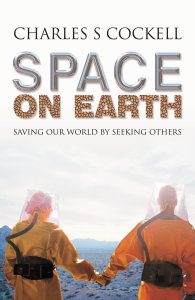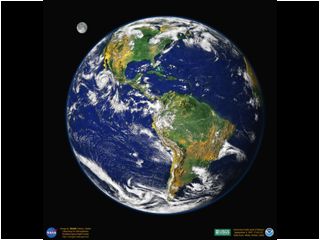
Charles Cockell, astrobiologist and head of the Earth and Space Foundation, has a new book coming out that I was privileged to have gotten to read in pre-publication proofs: Space on Earth: Saving our world by seeking others.
The premise of the book is that space exploration and environmentalism are the most ambitious and pressing concerns of our time, and while many people treat them as completely different and antagonistic endeavors, they in fact have the same objective. Cockell attempts to unite these two concepts by referencing our responsibility to “creating sustainable human communities in the cosmos – whether they are on the Earth or on any other planet or moon.”
See below the fold for my initial impressions (after reading the preface) and my opinion after completing the book.
I, probably like many people who encounter this book, did indeed think of space exploration and environmentalism as seperate areas of interest. The to-date examples of cross-application of sustainable and exploratory technologies appeared tenuous, and to be honest, space exploration doesn’t seem to be “urgent.” Furthermore, with NASA’s Earth Observation being scaled back, it seems like there might be some leaders who want to keep them separate (read into that as you will).
But by the time I got through chapter 5: Green Living, I was sold.
The environmental community could step in and do an interesting jb of allying itself with the space exploration community by establishing concept housing on Earth that is used to test out new technologies for green living on Earth and space, and to find new common ground in the technical and ergonomic design of equipment for both frontiers. Desert housing could become a test-bed for efficient use of water and food and new machines that are small, compact, energy-efficient and easily dismantled. Space agencies might use these facilities for testing the longevity of recycling systems destined for orbit, and particularly for the deserts of the Moon and Mars. By physically putting scientists and engineers from both communities together in houses they will find new ideas, and their creative talents will naturally begin to converge. (Page 98)
Cockell discusses the entire range of possibilities for cross-applicability of technologies, from resource management on asteroids, to market forces in colonies on the Moon and Mars, to monitoring and preserving wilderness areas here on Earth. Cockell presents a truly visionary view of humanity fully becoming a space-faring civilization in the coming century, and through his Earth And Space Foundation, is actively pursuing the objectives that he lays out in the book.

It is also interesting that Cockell makes a case for the first pictures of Earth from space as the spark that began the Environmental movement, introducing people across the globe to the big picture, where the Earth is a finite and precious home that we can screw up.
Space on Earth has caused me to rethink the view that my science-based interests in space exploration, and my nature-based interests in the environment, might be separate – so this book has already had a significant impact on how I view such endeavors. I’d encourage anyone with space and/or environmental interests to read it – it’s a great read, peppered with a great many interesting facts, and it was an easy read also, in simple terms for the average person.
